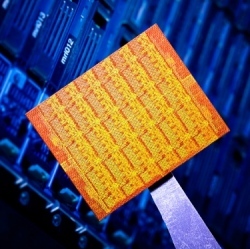
– Flash memory wears out after being programmed and erased about 10 000 times. That’s fine for a USB dongle that you’ll probably lose in a year, but not ideal for the solid-state drives of server farms. And the same problem keeps manufacturers from using flash to replace other types of computer memories. This month, at the 2012 IEEE International Electron Devices Meeting, engineers from Macronix plan to report the invention of a self-healing NAND flash memory that survives more than 100 million cycles.
What’s more, that may not even be the real limit. “We do not know what would eventually cause the device to fail, since we have not seen the end-of-life signals yet,” says Hang‑Ting Lue, a project deputy director at Macronix, which is located in Hsinchu, Taiwan. To test for 1 billion cycles would take several months, he says
Macronix engineers saw a solution in a competing technology, phase change RAM. In PCRAM, a bit is stored in a material called a chalcogenide glass, which can be either conductive or insulating. The bit’s material switches between those states when briefly heated in a particular way. According to Lue, Macronix researchers noticed that heating the glass to its melting point had a kind of healing effect on their PCRAM. (They reported those results at the IEEE International Reliability Physics Symposium in April 2012.)
Macronix engineers figured that a similar trick would work for flash, so they redesigned a flash memory chip to include tiny onboard heaters that could anneal small groups of memory cells. The redesign required quite a few changes. The biggest one, says Lue, was altering the gate electrode so that it could carry current to heat the memory cells. That alteration, which included the addition of diodes, took up so much space that the Macronix team had to devise a new architecture for its memory arrays to squeeze it all in, he adds.
